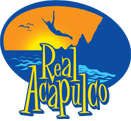Guerrero's Democratic Translation

Sunday February 6, 2005 was a historic day. Not only was it super bowl Sunday in the U.S. where the New England Patriots were about to become a football dynasty, but it was also a day when Mexico held a series of state elections with major national significance. Gubernatorial elections were held in three states including the state of Guerrero (the state in which Acapulco represents the largest population center).
The gubernatorial election pitted two former mayors against each other. The ruling PRI (Partido Revolucionario Institucional) fielded the former mayor of the state capital, Chilpancingo, Hector Astudillo Flores. His coalition was organized under the banner of "Todos por Guerrero" and included the the PVE (green party) and PT (workers' party). Against him was arrayed former Acapulco mayor Carlos Zeferino Torreblanca Galindo of the challenger PRD (Partido de la Revolución Democrática), together with Convergencia and the PRS (socialist party). Their slogan was "Guerrero Será Mejor."

What made this election so important is that the state of Guerrero had been considered one of Mexico's most backward states, stubbornly clinging to a political past of heavy-handed, single-party-rule by the PRI. Indeed, since the Mexican Revolution, there had never been a governor from a party other the PRI in the state of Guerrero. If the PRD were to win, it would not only break the PRI's 76 year stranglehold on the state, but would lead to a shakeup of power and a transfer of wealth from the entrenched elites.
The months leading up to the election were amazing. It was clear that the PRI was doing everything it could to cling to power. Astudillo's campaign propaganda was everywhere. It was impossible to turn on the radio or walk down the street without hearing his voice or seeing his face.
Indeed, most pollsters had the two candidates in a dead heat. The PRI had always excelled at winning tight races by taking just the right steps at the last minute, especially at the polling places. Most pundits were just assuming the PRI would emerge victorious.
Then Zeferino closed his campaign in Acapulco's Zocalo, a week before the election. The enormous crowd created a swell of energy in its massive show of support. Voter after voter explained that 2005 was the year that they would finally "sack the PRI."
Zeferino's campaign used a big Z, made to look like the mark of Zorro (and a lot of people actually showed up in zorro masks and capes). Astudillo used the symbol superman wore on the front of his tights replacing the big S with a Big A. He also used another curious design, a big A in a circle that looked uncomfortably close to an anarchy emblem.
The PRD's message was clear: "The PRI will say and do anything to remain in power. They're corrupt, they've mismanaged the state for decades. The time has come to throw them out."
The PRI's message was not so clear. They ran on some vague plan to reduce people's electricity bills. They had some catchy tunes instead, like "Astudillo más empleo, más empleo Astudillo...")
It was impressive how serious the local population had become about about electoral politics, where the tradition of vote buying had become an art form. Acapulco, the undisputed king of party towns, even respected the ley seca (dry law), which meant that no alcohol could be served or sold from the Saturday night before the Sunday election until the polls closed.
When election day came, it was clear that the PRD was on the way to an impressive victory, and that the PRI was on the way out. The PRI's reliance on the traditional tactics of carrot and stick, rather than on the political message, proved to be a mistake. The handwriting was on the wall, and the populace seemed determined that 2005 would be the year of change. The vote would be, by local standards, relatively clean. There was nothing the PRI could do to change the outcome.
What was supposed to be a close election turned out to be a a bitter defeat for the PRI. Astudillo even lost his home city of Chilpancingo to the Zeferino express. In Acapulco, the PRI was simply overrun by the left-leaning PRD. The PAN (Partido de Acción Nacional), the party of then-president Vicente Fox (Mexico's conservative party somewhat akin to the Republican Party in the US), pulled only 1% of the vote, proving that Guerrero stood firmly on the political left. The final results of the historic election were: PRD 55% (585,000 votes), PRI 42% (447,000 votes), PAN 1% (11,000 votes). The PRD swept the state except for a few traditional areas, like Taxco.
In retrospect, it is no surprise that the polls were so wrong. Many voters felt they had to say in public that they were going to vote for the PRI, as the party had a way of being intimidating. In private the voters would quietly admit that they were really planning to support the PRD.

The PRI's loss in Guerrero was significant. Not only was it in many ways a final step in Mexico's translation to a true multi-party democracy, but the victory paved the way for the PRD in the national elections and for its standard bearer, Andrés Manuel López Obrador.
The PRD's win in Guerrero could be compared to a win by the Democrats for the statehouse in a southern state, like South Carolina. Of itself, it would be important locally, but its main implication would be that a major political shift was underway, with possible consequences at the national level.
In the political Landscape of Guerrero. There are: 10 Federal Districts, 28 Local Districts, 77 Municipalities, and 2,782 Sections. As of June 2003, there were 1,907,079 registered voters (907,979 men and 999,100 women). Source: Lista Nominal. The total population of Guerrero was 3,079,649, (1,491,287 men and 1,588,362 women). Source: XII Censo General de Población y Vivienda 2000, INEGI.

